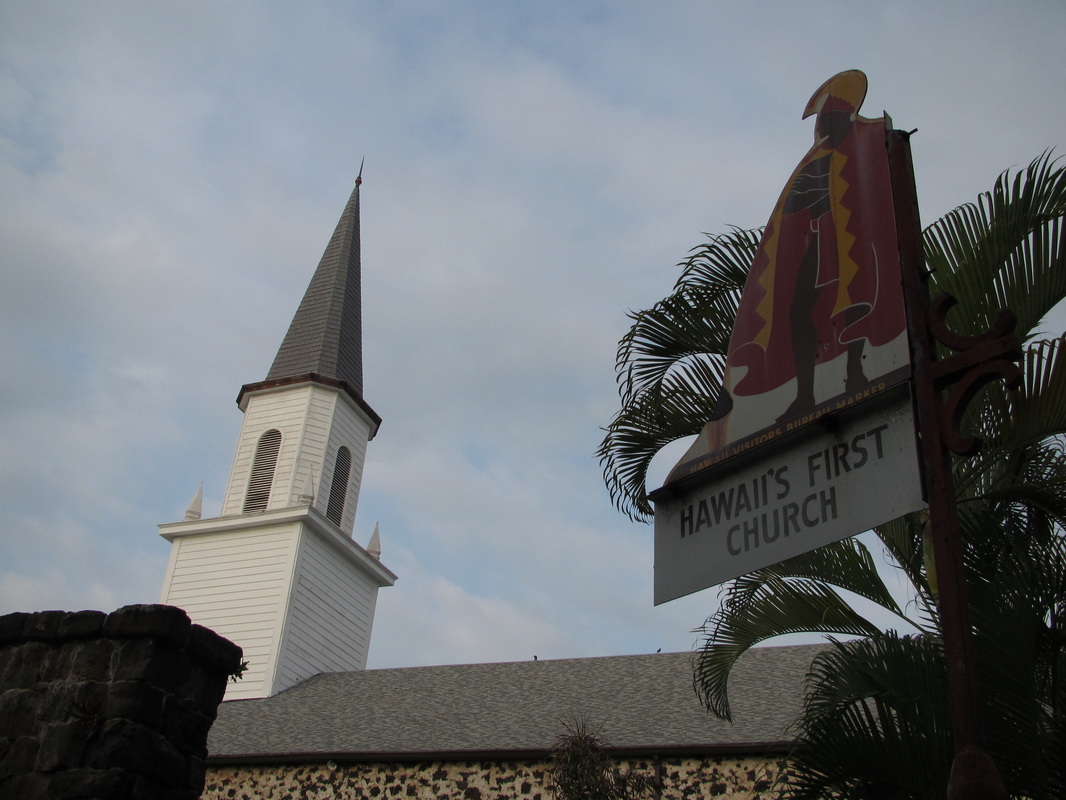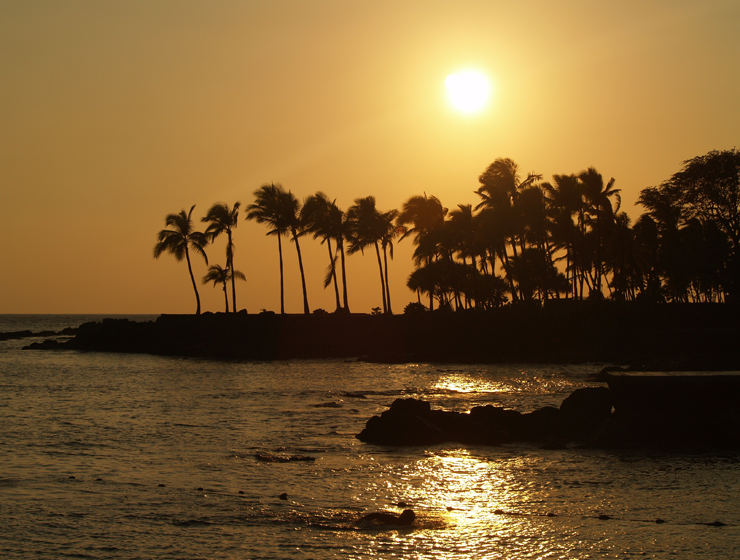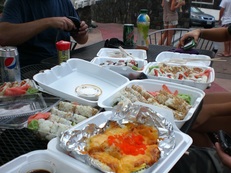Mokuaikaua Church Our first stop in Kailua-Kona was the Mokuaikaua church, which was the first established Christian church in all of Hawai`i. The church was established in 1820 as two separate hale (Hawaiian thatched roof house). The church that stands on the spot today was constructed in 1837 using bricks from demolished heiaus (Hawaiian temples) and wood from the `Ōhi`a trees that are found on the slopes of the mountainsides (Boshard, 2011).
Many churches like this one were established during this time period because this was the era of King Kamehameha II, the king who abolished the practice of the former Hawaiian polytheistic religion. He aimed to make Christianity the only religion in Hawai`i, and destroyed much of the evidence of the old religion. Not only was this influx of Christianity influenced by the king, but also those who had begun to colonize the Hawaiian islands. Many missionaries came from the United States and sought to spread the word of God to the people of Hawai`i. Their influence, coupled with that of the new order of Hawaiian royalty, led to the influx of Christianity into the Hawaiian culture. |
Kokonutz Bar and Grill After we visited the church we were given some time to browse the restaurants along the main drag in town, and some of us decided to make a visit to Kokonutz. We originally didn’t anticipate this to be anything more than a stop for dinner, but we were pleasantly surprised that it became an actual learning experience.
We entered the restaurant and took our seats at the bar and were immediately labeled by the many patrons as tourists and treated accordingly. Unfazed, we started talking with our bartender Zoe, as well as a few of the regulars who had a lot of very odd but interesting things to say. One man with whom we spoke never gave us his name, but we learned a lot from him. He told us how he had moved to Hawai`i from California to embrace an even more laid-back lifestyle than the West coast could offer. He was a fisherman who caught fish early every morning and sold them to local sushi vendors and then spent the rest of the day doing whatever he pleased. This was a lifestyle that seemed all too common to see during the duration of our stay on the island. The gorgeous weather and relaxed laws in place on the Hawaiian Islands seem to perpetuate this laid-back island lifestyle. |
Sources
Boshard, Henry. 2011. The History of Mokuaikaua Church. Kailua-Kona. Mokuaikaua Church.
Juvik, Sonia P. and James O. Juvik. 1998. Atlas of Hawai‘i. Hilo, HI: University of Hawai`i Press.
MacGowan, Donald. (Photographer). 2011. Sunset Over Oneoneo Bay [Photo], Retrieved November 30, 2011
(http://www.bing.com/images/search?q=Kailua+Kona&view=detail&id=D3BED5250B52326CA4DFD0561D113CDF64BBE31C&first=0&FORM=IDFRIR).
MacGowan, Donald. (Photographer). 2011. Sunset From Kailua Seawall [Photo], Retrieved November 30, 2011
(http://www.bing.com/images/search?q=Kailua+pier+kailua+kona&view=detail&id=BE77BB4B8DE1B879E9544915836F8E56C4AE7DF4&first=0&FORM=IDFRIR).
Banner photo by Donald MacGowan
Juvik, Sonia P. and James O. Juvik. 1998. Atlas of Hawai‘i. Hilo, HI: University of Hawai`i Press.
MacGowan, Donald. (Photographer). 2011. Sunset Over Oneoneo Bay [Photo], Retrieved November 30, 2011
(http://www.bing.com/images/search?q=Kailua+Kona&view=detail&id=D3BED5250B52326CA4DFD0561D113CDF64BBE31C&first=0&FORM=IDFRIR).
MacGowan, Donald. (Photographer). 2011. Sunset From Kailua Seawall [Photo], Retrieved November 30, 2011
(http://www.bing.com/images/search?q=Kailua+pier+kailua+kona&view=detail&id=BE77BB4B8DE1B879E9544915836F8E56C4AE7DF4&first=0&FORM=IDFRIR).
Banner photo by Donald MacGowan



